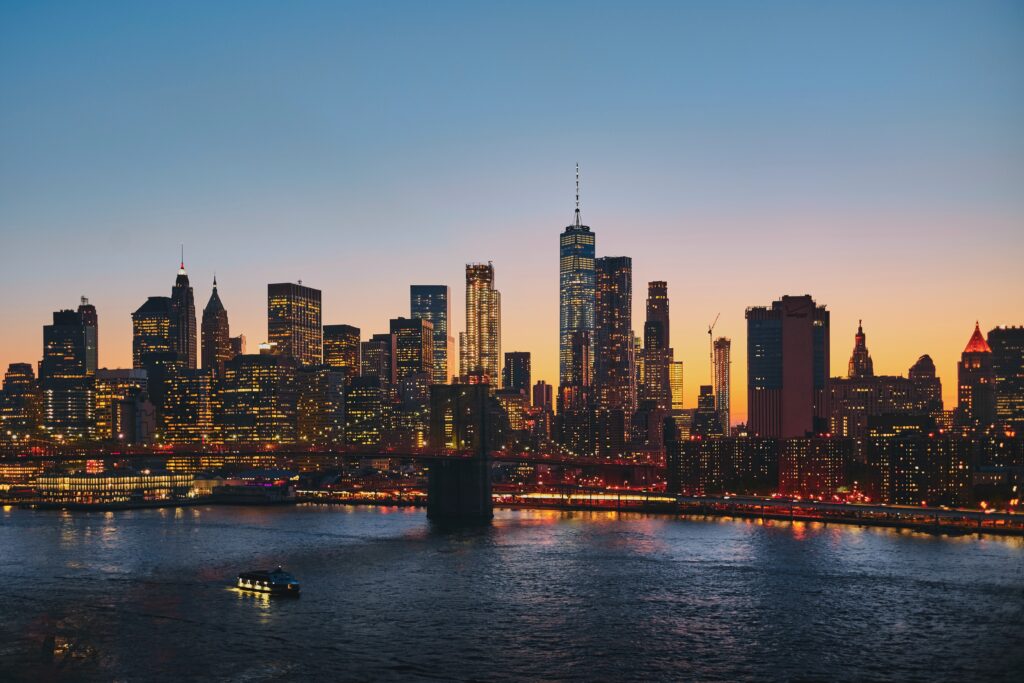Coverage
The law places an emissions limit for buildings larger than 25,000 square feet, covering 60% of NYC’s building area and 50% of NYC’s building emissions. Many buildings are significantly above emissions limits and will require comprehensive retrofits to meet emissions goals.
Compliance and Penalties
To comply with LL97, buildings must maintain GHG emissions under the specified limit for their property type and submit a GHG report through Energy Star Portfolio Manager by May 1st of each year, starting in 2025. The Office of Building Energy and Emissions Performance will oversee the implementation and compliance of the law.
Buildings that fail to comply – either by exceeding emissions limits or submitting the report late – can face significant financial penalties. However, given the disruptions from the COVID-19 pandemic and the large financial investments that will be necessary for buildings to meet emissions limits, there is some flexibility for compliance in the first few years. Buildings demonstrating “good faith efforts” may receive penalty mitigation for exceeding emissions in the first compliance period (2024-2029) if they meet certain requirements, such as showing that work to meet emissions limits is underway and continuing to submit the GHG report annually.
Timeline
To help building owners stay on track with LL97 Compliance, here are some key dates to remember:
May 1st, 2025: First Compliance Report Due for most covered buildings.
May 1st, 2027: First compliance report due for multifamily buildings with up to 35% or greater rent-regulated units.
May 1st, 2030: New, stricter emissions limits are placed on covered buildings.
May 1st, 2035: New, stricter emissions limits are placed on covered buildings.
May 1st, 2036: First compliance report due for multifamily buildings with only income-restricted housing (with no rent-regulated units).
Action Steps for Compliance
Building owners must recognize that reducing GHG emissions is now a responsibility of property ownership. To ensure compliance with LL97, building owners can take the following action steps:
- Check Eligibility: Refer to the Covered Buildings List to determine if your building needs to comply with LL97 or if there are alternative compliance pathways for your building.
- Collect data: Start collecting data on your buildings, including size, usage, energy consumption, and emissions to prepare to submit your annual report in 2025. You should already be complying with LL84, which requires owners of large buildings to benchmark their energy and water usage annually.
- Create an Energy Star Portfolio Manager Account: If you haven’t already, set up an Energy Star Portfolio Manager Account and assign your building its appropriate property type(s). Use the ESPM glossary to calculate the emissions limit for your building.
- Calculate Your Building’s Emissions Limit: After setting up your Energy Star Portfolio Manager Account and all your properties, use Table 2.1 to identify the emissions factor for each property type in the building. To calculate the total building emissions limit for a covered building with multiple occupancies, the gross floor area (GFA) is multiplied by the emissions factor for each use.
- Schedule an Energy Audit: Schedule an energy audit to identify areas for improvement. If your building is over 50,000 square feet, you can review your LL87 Energy Audit and Retro commissioning report.
- Develop a Carbon Reduction Plan: Begin developing a long-term carbon reduction plan to ensure you meet targets.
- Prepare for Energy-Efficient Upgrades: Start preparing for retrofits to your building, such as installing more efficient heating, ventilation, and air conditioning (HVAC) systems and lighting.
How can WatchWire help?
Without a data management platform, tracking all the data points necessary to comply with LL97 can be daunting and time-consuming. WatchWire can assist buildings in tracking the necessary energy and emissions data for LL97 compliance and keeping it organized in one place. Moreover, WatchWire offers integration with Energy Star Portfolio Manager, making it easy to upload energy data for annual benchmarking requirements.
Resources
There are several resources and programs that can help buildings navigate Local Law 97 compliance. Some of these include:
Local Law 97 is a significant step forward in NYC’s efforts to combat climate change by targeting emissions from large buildings. Building owners play a crucial role in meeting LL97 requirements, and by taking proactive steps, they can not only avoid penalties but also increase their market value, lower operational costs, and create healthier and more comfortable spaces. To stay compliant, it’s essential to understand the law, gather data, and plan for energy-efficient upgrades. With these efforts, we can work together to make NYC a greener and more sustainable metropolis.
Appendix:
The maximum annual penalty for exceeding emissions is the difference between a building’s annual emissions limit and its actual emissions multiplied by 268. The maximum fine for individual buildings is 5 million annually. The fine for not submitting a report is 0.50 per building square foot per month.
References:
https://www.urbangreencouncil.org/wp-content/uploads/2023/02/LL97-Summary_2.8.2023.pdf
https://www.urbangreencouncil.org/what-we-do/driving-innovative-policy/ll97/
https://www.nyc.gov/site/sustainablebuildings/requirements/reporting.page
https://www.nyc.gov/assets/sustainablebuildings/downloads/pdfs/LL97_ESPM.pdf
https://climate.cityofnewyork.us/initiatives/getting-97-done/
https://igpny.com/local-law-97-19-f-a-q/#:~:text=LL97%20of%202019%20F.A.Q.&text=The%20law%20is%20designed%20to,will%20be%20made%20more%20stringent.
 Top Sustainability Trends to Watch in 2025
Top Sustainability Trends to Watch in 2025

 Log In
Log In









